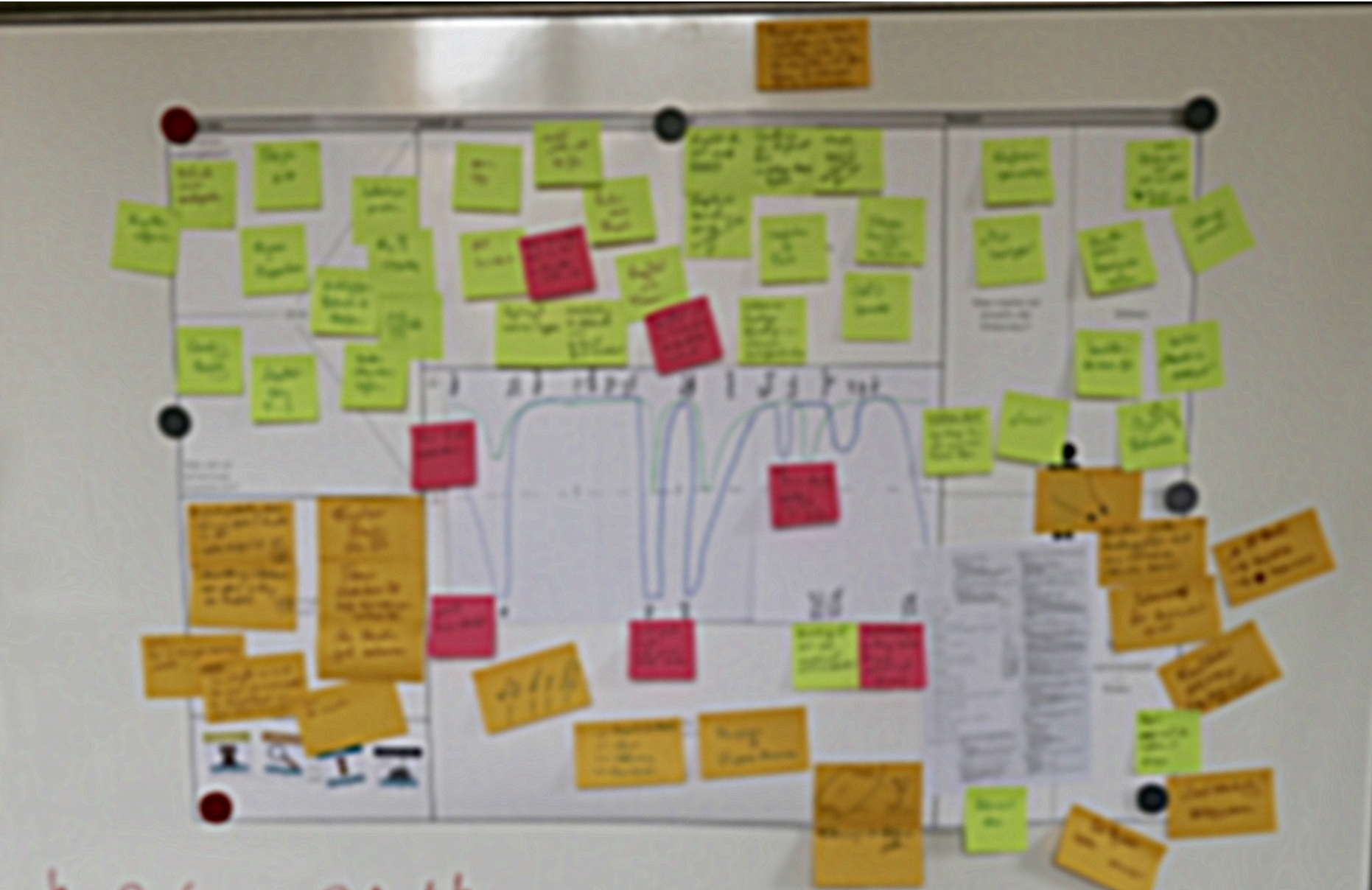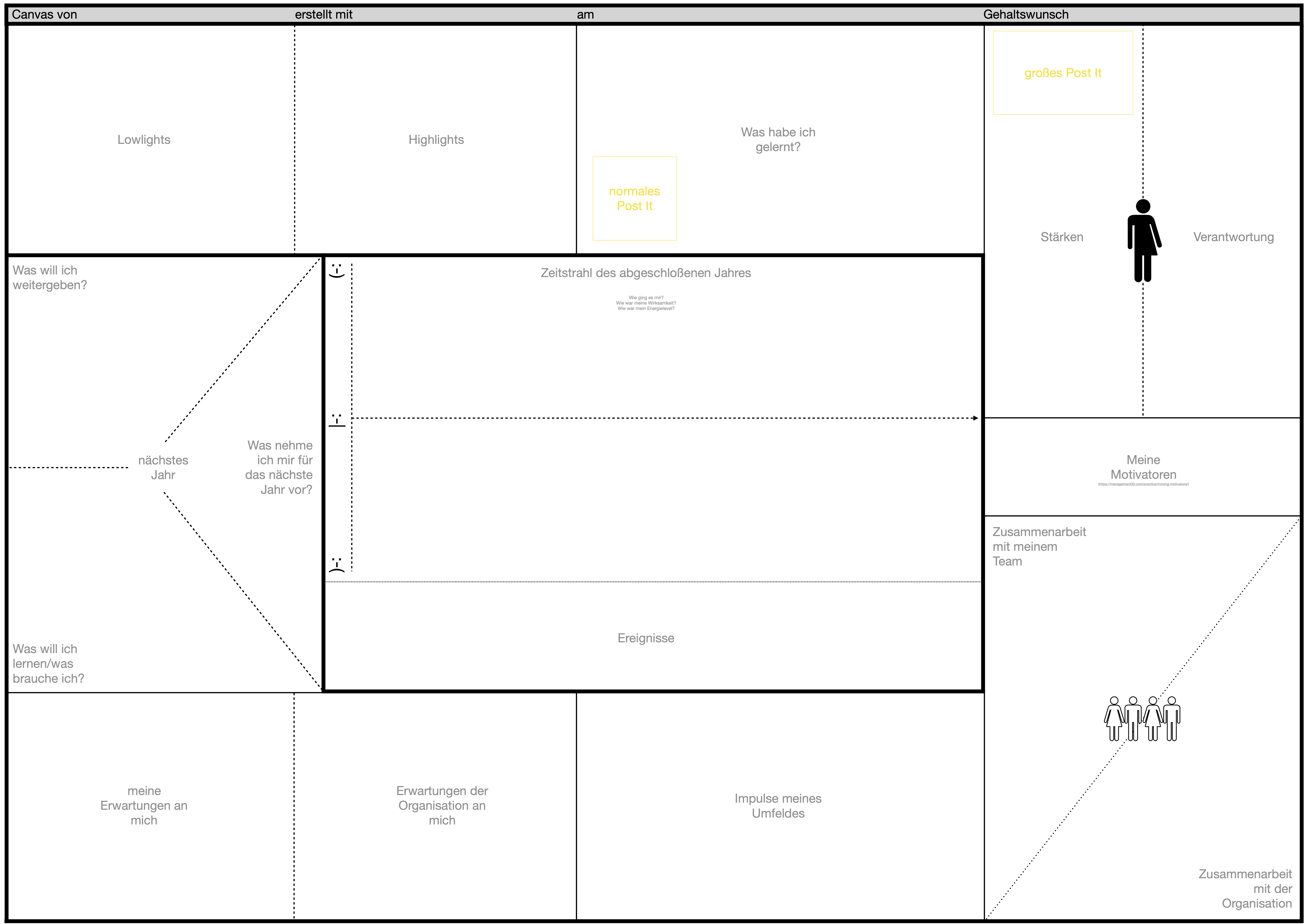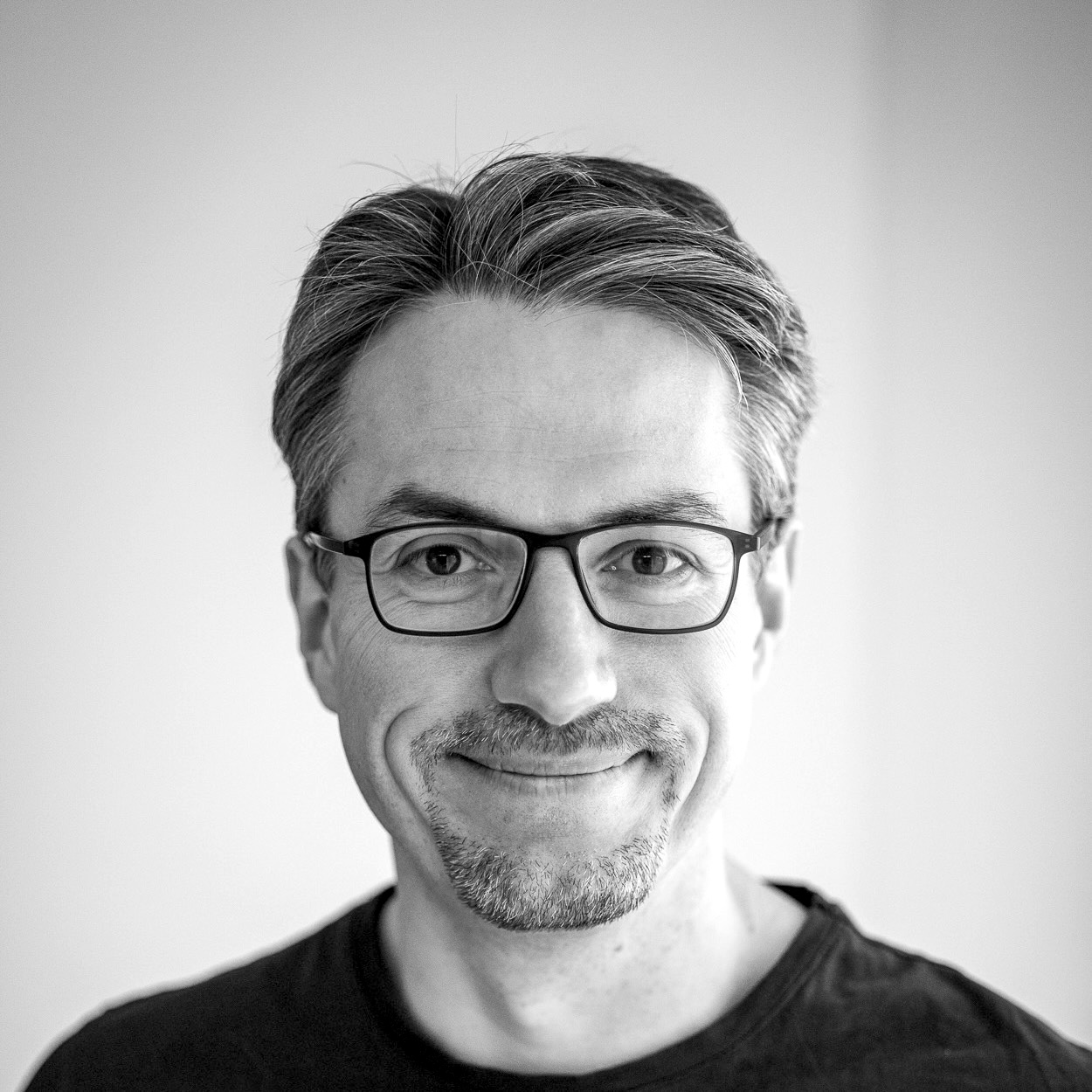Self-organized salary finding
TL;DR: the canvas as PDF download without a link to Holacracy.
At one of my former employers, I worked intensively with my colleagues on salary, effectiveness, and contribution to the company’s success as part of self-organization and Holacracy. My colleague at the time, Daniel, and I gave a presentation on this topic at BedCon in September 2018:
For me, the most motivating aspect of this subject was the idea of giving impulses to a system that improves the common understanding of all involved individuals. In the past, I’ve had some bad experiences in this area - like probably everyone in their own professional life.
Based on the ideas and impulses from our talk, after a great talk by Udo Wiegärtner and Doris Dietz at Manage Agile 2018 on the topic “Und Augenhöhe geht doch …” (Youtube Video) I saw further opportunities. The idea presented in the talk is based on the concept of a Business Model Canvas: create a canvas for employee reviews to improve them. I found this idea inspiring, so I made a first draft for my then-employer’s employee reviews in a self-organized system. I then refined this with my colleagues and brought it into the company. The employee reviews conducted with it had a significant and more consistent structure, greatly supporting the actual development and performance reviews. The approach helped both the “leaders” (note: we designed the concept of “leader” differently at Europace as part of the self-organization) and the colleagues to gain a deeper and better understanding of the previous year.

Real example from 2018
What about non-Holarctic companies?
Based on the experiences from the 2018/19 employee reviews and due to the many conversations at conferences and meetups, I have modified the canvas again. I am happy to provide it as an alternative for companies that are not organized with a framework like Holacracy. Below is an A0 example with indicated post-its:

adapted canvas with example post-its
I recommend having it printed as an A0 poster (PDF download) and then using post-its to reflect collaboratively on the past year.
Process
The focus of the canvas is geared toward a good shared understanding of the past year and thus deep shared reflection as well as alignment of expectations. I have designed this canvas version to start at the top left with the negative and positive events of the last year. Afterward, you collaboratively move clockwise through the individual areas until you end in the shared outlook for the following year.
After the area of the events of the last year, the canvas contains the area about personal development and experiences. After that, there is room for one’s strengths and responsibilities. I have intentionally excluded the area of potentials, as these can introduce an additional level of complexity for a joint salary discussion, further complicating the overall topic. The aspects relevant to effectiveness are likely to appear in the expectations or collaboration area anyway. In my experience, obtaining personal feedback before collaboratively creating the canvas to compare one’s self-perception with that of others is enormously valuable.
In the “My Motivators” section, you are invited to reflect on the most critical aspects of your motivation by using the Moving Motivators. “Collaboration with my team” and “Collaboration with my organization” are intended for all facets of collaboration in everyday life and beyond. The division into “team” and “big picture” can support taking specific perspectives on one’s daily work (e.g., excellent collaboration in one’s team, but hardly any aspects when looking at the organization).
Up to this point, the perspective of the canvas is more directed into the past. This changes with the following areas: “Impulses of my environment”, “expectations of the organization towards me”, and “my expectations towards myself”. There, the collaboration focuses on the future. In the area of “expectations”, my experience is that it is unnecessary to come to a joint agreement when working with the canvas. It can also be sufficient to exchange expectations and discuss an agreement downstream simply.
The process through the canvas ends with concrete thoughts about the following year with the perspectives “What do I want to share with others?”, “What do I intend to do next year?” and “What do I want to learn/what do I need?”. My guiding principle has always been not to plan the following year regarding annual goals but rather to talk lightly about what is already apparent and what can be discussed, if necessary, based on expectations.
The conclusion of the canvas is finding the desired salary together and having an open exchange about the needs behind it. In the past, the actual offers were subsequently found via methods that would go beyond the scope of this post, some facets of which already appear in the presentation by Daniel and me.
